What is a Anti-Ad fraud detection tool?
Ad fraud is the act of scraping a script, robots or any fake method to view, click or convert the viewers solely for the purpose of stealing money from advertisers. This bumper amount of fake traffic or interaction, which is sometimes estimated to eat away more than $20 billion from advertisers’ pockets worldwide, happens to be the most common advertiser’s concern. Here in this post you will get to know Anti-Ad Fraud Tools to safeguard all your digital campaigns.
At the moment, the ad fraud issue has been addressed by many companies having tools for combatting this. These tools identifies traffic and potions via algorithms to detect not-human and fraudulent activities. A tool for anti-fraud could be looking for something like bot-like behaviors, suspicious IP addresses, or repetitive patterns to detect if any of them can stand as fake views or clicks.
Through an anti-ad fraud service, advertisers can identify the part of their campaign that is in the sure of being exposed to fraud. The result of this approach is that they don’t spend money on repeated impressions on no real humans. Instead, they are provided with the opportunity to modify their campaigns to target real people.
How can we stop ad fraud?
Traditional ad-making is no longer dominant and online marketing is the future of advertising. Digital ad fraud lineage still to poses a warning in the advertising sector, which is said to more than $42 billion globally in that year. Scammers employ bot, fake site, fake user and other techniques to make clicks and impressions look genuine but they are not and cheat with advert money.
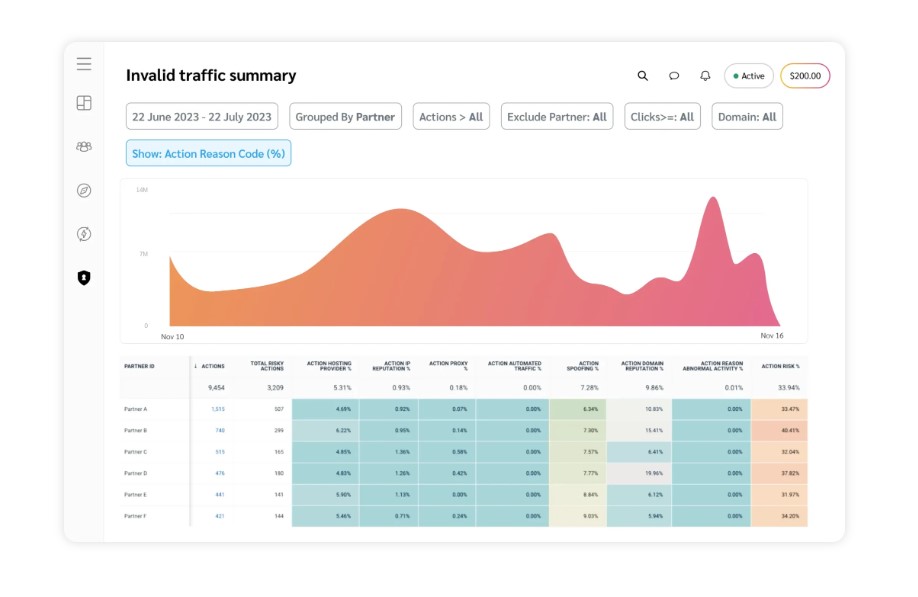
However, by following these best practices, advertisers can protect their ad budgets:
- Verify Publisher Websites – Checks out every website on which you place your ads carefully. For this reason, you as an advertiser, should try and find a site that follows the content quality and that is not totally bot-driven. Rely on assurance services to ensure credibility of sites.
- Filter traffic – leverage ad verifications which work at the pre-campaign stage to filter out non-human, fraudulent traffic before it impacts your campaigns. Create blacklists that will prohibit IPs coming from sources used for fraudulent activity.
- Look Out for Anomalies – Oversee if there suddenly is a surge or a slump in the performance metrics including but not limited to CTR and conversion rates. Unexpected abundance of fluctuations may mean that fraud took place. Compare metrics across channels to develop a clear picture of the overall performance of your campaign and collect the outliers.
- Protect campaigns – incorporation of CAPTHA, frequency capping and device ID tracking to ensure that fraud is difficult to be committed. Try to distribute your budget between various platforms and means to help protect your money to a larger extent.
Ad fraud strategy is always emerging. The more you learn about fresh schemes fraudsters use in order to always remain one forward in looking out for your ad spend, the better for you. The best technique that can fight against ad fraud is the employing of a proactive approach.
List of Anti-Ad Fraud Tools
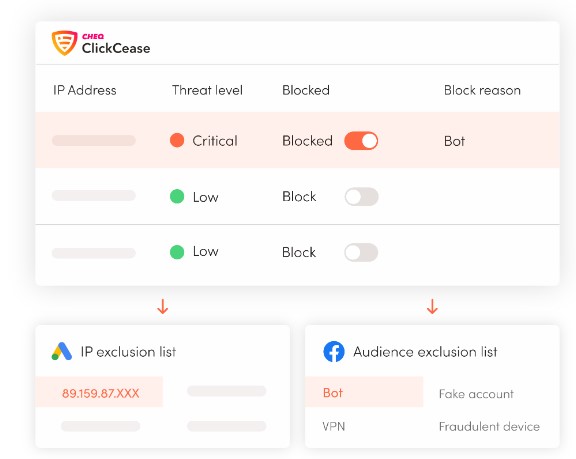
To safeguard you digital campaigns you need to have these tools in your bucket list:-
- TrafficGuard
- Clickcease
- PerformCB
- FraudBlocker
- Anura
- DoubleVerify
- Forensiq
- Pixalate
Top anti-fraud tools additionally help maintain effective protection that saves marketers from accidents whereby they end up charging for fraudulent traffic.
With the arrive of digital advertising and the scale of modern advertising requires brands and publishers to implement third-party verification, in order to decrease waste and to improve transparency of campaign.
TrafficGuard – Anti-Ad Fraud Tool

TrafficGuard is an award winning anti-ad fraud software/Tool that combats ad fraud in digital marketing. Following the tendency of online advertising budgets to rise, the threat of ad fraud that steals away ad spend with fake engagement and no conversions does exist.
TrafficGuard usurps the position of the most powerful defense, enabling advertisers to detect and prevent fraud while being sure that their ads are seen only by real people. TrafficGuard utilizes state of the art algorithms along with machine learning to detect and stop fraudulent activities on the various digital platforms particularly the display, video, and mobile.
As the TrafficGuard tool can quickly analyze large volumes of data in the current situation, it can detect suspicious patterns and behavior that point towards fraudulent activity, like bot traffic, click farms and fake installs.
Clickcease – Anti-Ad Fraud Tool

ClickCease is the premier anti-click-fraud provider that provides essential protection to advertisers, who need to be insured from the dangers of online fraud ad spending.
Click fraud is a really hot topic nowadays for digital advertisers, as it is the factor that can wreck your budget plans and advertisement campaign metrics due to the fact that of making false clicks on PPC ads. The ClickCease solution comes in to the rescue with its robust toolbox of the latest technologies empowered to detect, halt, and offset the consequences of click fraud incidents.
At the end built-in in ClickCease there is complex click fraud detection technology. Machine learning algorithms and behavioral analysis solutions of ClickCease let it detect and signal repetitive patterns of suspicious clicks that embody fraudulent activities. If there is a bot traffic, click farms, or competitors attempting at click compromise, all of this is being identified by the algorithms of ClickCease so as to handle the matters in real time.
FraudBlocker – Anti-Ad Fraud Tool

FraudBlocker is a cost-effective ad-fraud prevention software tool that allows advertisers the ability to cut their losses and achieve higher success rates in their campaigns investment. It is the time for advertisers to have a major problem – Ad fraud is still a key threat to them. FraudBlocker.com provides a comprehensive solution and helps to limit the spread of fraudulent activity so that advertisers can spend their budgets wisely and productively.
Actually, the core concept of FraudBlocker.com is exactly its cutting-edge fraud detection technology. A slew of advanced algorithms and processor learning techs get used by FraudBlocker.com for analysis of five-reels digital advertising traffic in the course of definite time period. Anomalies and suspicious activities are detected and broadcasted across the channels.
Whether it is the calculated ‘click’, or the incorrect ‘click’, or even the ‘conversion’, FraudBlocker.com, equipped with the next generation technology, is well-versed in its art-of-work to detect and block the fraud before it can create any damages to advertisers’ campaign.
PerformCB – Anti-Ad Fraud Tool

PerformCB differs from others in the market as a performance marketing network that connects advertisers with publishers for delivering campaigns. The main goals of the company are to drive the growth and maximize the rate of return on investment (ROI) with the help of ingenious digital marketing strategies.
In the era of performance-oriented marketing PerformCB leverages the benefits of the latest technologies, reports generated through analytics and expertise to deliver scalable results coupled with precision measurements to the advertisers across the spectrum of verticals.
Perform’s loyalty to the best, with the help of its anti-fraud technology program- PerformSHIELD- and the 24/7-imposed internal teams, is empowered by its overall campaign safety. The machine has a great usability since it can use a wide variety of CPA pricing models such as Cost Per Install (CPI) and Cost Per Engagement (CPE) that yield the highest return on investment (ROI) across the mobile sector.
Anura

Anura is the leading ad fraud detection and prevention platform with a global influence and accessible to advertisers. Adopting machine learning algorithms and behavioral analytics, Anura system identifies and controls traffic from bots in real time during digital advertising campaigns.
Its unique technology is able to differentiate between genuine human interactions and fraudulent behavior thus advertisers can run ads that give optimum returns on the investment The advertising platform Anura provides comprehensive reporting and decisive metrics, equipping advertisers with the tools they need to make sound decision and maximize campaigns return on investment.
Anura’s transparent view of ad traffic quality enables advertisers to shield their investments against negative impact and uphold the credibility of digital advertisement channel.
Impact

Impact.com is one of the key systems that are used by advertisers to keep their digital campaigns protected via the detection as well as prevention of ad fraud. With an advanced technology, Impact do not only implement various algorithms and machine learning techniques but also detect and block fraudulent activities in a real-time manner.
Spreading huge volumes of data through including clients’ behaviour and traffic flows Impact detects legit activities compared with fraudulent behaviours and help advertisers to depend on the integrity of their campaigns.
Having an active fraud-prevention stance as well as an array of ritual reporting tools, Impact empowers advertisers not only to minimize the risk of ad fraud but to maximize the outcomes of their campaigns and to increase the amount of return on their investment.
Pixalate
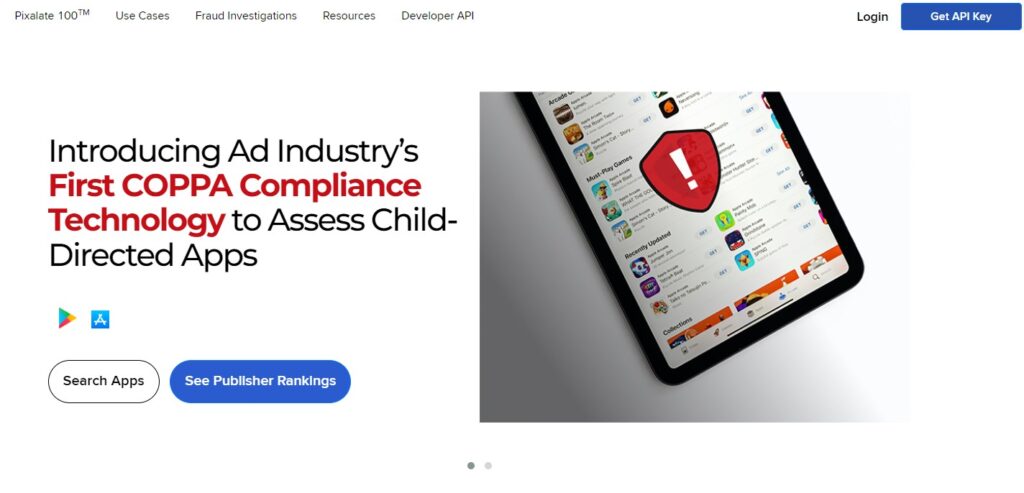
Pixalate is an analytics and fraud intelligence system which connects platform quality management to ad fraud elimination for advertisers, publishers and platforms. The AI system that the company is to use is capable of identifying fake traffic, bot fraud, and scams from the digital advertising campaign to help the campaign improve ROI as well as viewability.
The company was founded in 2014 and it is using its own created machine learning system to analyse 4 million domains and 20 billion apps inventories with billions of ad display monthly. It also helps it to detect the origins of invalid traffic even far higher.
Pixalate enables digital advertizing eco-system to get more control over fraud detection and making the ad inventory suitable and at the same time targeted and precise.
DoubleVerify

The DoubleVerify is basically an intelligent analysis platform working with software featuring digital media measurement and analytics tools. The firm comes with the efficacy of advertisers, publishers, platforms and ad-tech-repair (ATR) companies in formalize that the media they use is high-quality.
The range of products offered by doubleverify covers verifiability metrics, related to viewability, ad fraud protection, brand and suitability safety, and customized reporting functions.
Being DoubleVerify, that was established in 2008, it locates in New York with geographically spread offices. The firm would like it to be regarded as a company to be trusted, effective, safe and decent in the digital advertising industry, provide the results desired by people and prove that the ads are actually delivered to real people, in secure and acceptable settings which will also improve the public image and performance of the industry.
What is ad fraud prevention?
There are programs known as Fraud detection tools and they are software systems that are meant to automatically detect unlawful actions and transactions.
Some key things to know about fraud detection tools:
They apply deep learning algorithms to huge data sets to find the peculiarities, patterns, and unusual occurrences such as unnatural transactions, compromised accounts, identity theft etc. Transaction data, network traffic, and customer behavior are among the sources under analysis.
Through techniques like rules-based analysis, predictive modeling, machine learning, neural networks, and data visualization they can easily figure out the fraudsters. Models will be trained on labeled historical data which also includes the both fraudulent and legitimate activities.

The data that can be used to analyze for the inclusion of the following:
- IP address
- transaction information to identify the origin of money
- account information
- geolocation data
- transaction frequency
- transaction size
- changes in usage patterns, etc. to spot risky transactions
Technology has several types of tools to detect different areas of fraud that include payment or credit card fraud, insurance fraud, identity fraud, insider threats, etc. For example, some instruments specialize within a specific industry whilst others look for particular types of fraud.
This is achieved by making alerts for controversial transactions and activities and therefore further investigation and efforts can be carried out by humans. Functional areas of case management allow for incidents interrogation.
Tier 1 platform creators are SAS, SAP, IBM and FICO amongst others. Companies can implement those on site or on the basis of cloud/SaaS model. Integration functionalities should be provided to the system to be able to process data from different systems.
To sum up, fraud prevention tools help organizations to speed up the detection process and to identify fraudulent activities in a more efficient and effective way so that any possible negative consequences can be tackled through further investigation and response. They automate majority of the analysis of transactions and uncovering the instances of fraud or risk.
Types of ad fraud
Here are some common types of ad fraud:
- Impression fraud
- Click fraud
- Conversion Fraud
- Advertising fraud
- Pixel Scrunching
- Ad unit stacking
- Resetting Device-ID fraud
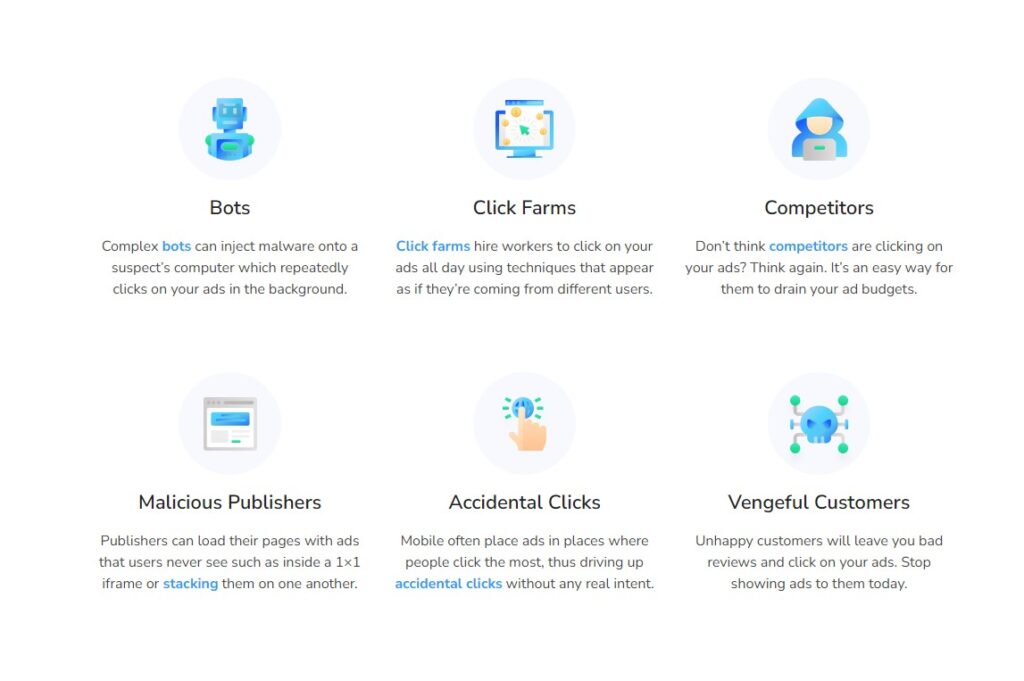
Impression fraud
- Unscrupulous persons create scripts that simulate bot or human actors forcing impression counts to go up without any target audience viewing the ad. It infiltrates the mind of the audience that the ad is being seen and heard way more than it virtually is.
Click fraud
- Bots or scripts which imitate clicks for the pay-per-click adverts, though do not have any real users engaged in the ads. Accordingly, publishers earn unjustified money, and advertisers suffer false clicks.
Conversion Fraud
- Bots fill up forms, Open accounts, complete instillations of apps or buy some items to inflate the conversion rate on the ads artificially. Advertisers spend money on non existing transactions that are made by people who are not their real customers.
Advertising fraud
- One of the most widely–spread techniques is known as domain spoofing. Here, Ads are placed on the bad websites with domain names which are supposed to serve only the non–counterfeit publishers. The misleading banners bring in only ad revenue with inability to get the ads across to their intended viewers.
Pixel Scrunching
- Many ad tags of different services are inserted among each other on top of the webpage. The participation of multiple ad buyers in the same ad space results in the payment of these ads by different advertisers.
- just like pixel stuffing situations, but various ads are displayed in the same ad slot simultaneously with pop-under tactics. One advertiser does not pay for all of the airtime.
Resetting Device-ID fraud
- Some devices change their identities to look like new devices in order to get more money from advertisers. These newly created accounts are presenting a model viewers to pay for fake users.
One of the primary reasons for most kinds of adfraud is to monetize from the advertisement system into which real ads are not shown and the engagements of real users are not considered. The essence of the advertisement depends on the ability to accurately identify and avoid scamming for advertising agencies.
Impact of ad fraud on campaign performance metrics and ROI
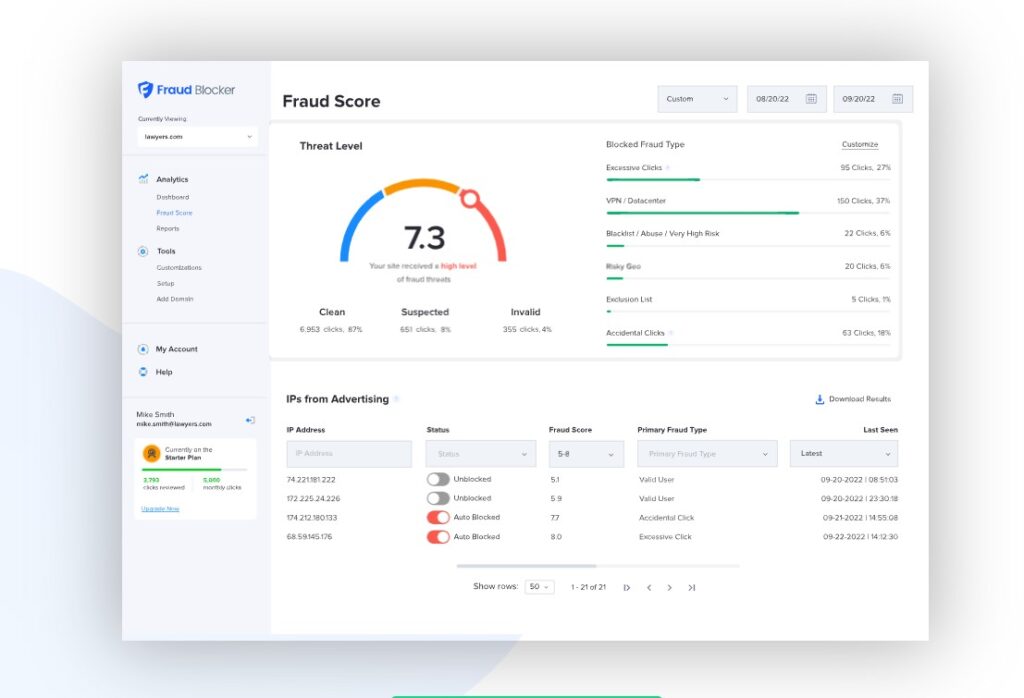
Ad fraud can negatively impact campaign performance and ROI in a few key ways:
- Out-sized results – The fraudulent clicks, Ad impressions, and so on inflate the metrics, and the metrics try to reflect the true user engagement, but they can’t because they are not true. This is, therefore, tricky in determining if campaigns were vital for election.
- Rectangular spend of money on adverts – This money spends on fake adverts which leads to no real value, as the fake user do not actually engage with the ads or convert. This is a direct way of lost return on investment where money was not used that it might be used in another field. Research is there and all illustrate that 20% of the digital ads budgets were sold off to fraud.
- Ineffective targeting – Fraudsters mostly penetrate high CPC ads, so inappropriately large part of the budget can be withdrawn from true inventory and audiences that can be expected to convert. This further reduces ROI.
Brand threats like fakes traffic and bots correlated by a brand’s advertisements can have a big impact on the brand’s credibility should it happen unintentionally.
What is important is filling the gap with fraud detection, prevention and measurement systems that would be able to check a suspicious signal, reject a non-human traffic, and give human metrics and their shared humanity. Defense against fraud is the primary role of the marketer and it will be achieved by making sure that the campaign metrics will be regularly assessed for any fraud and the campaign efforts will be optimized to minimize waste and contribute to better understanding of campaign efficiency.
The most important thing is to make sure that ad fraud is transparent and clear and that it’s not tampered with so that you can get the right ROI.




